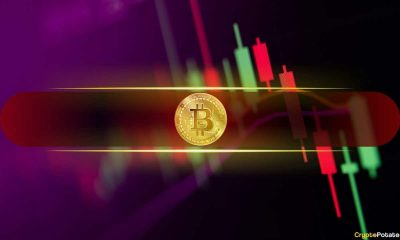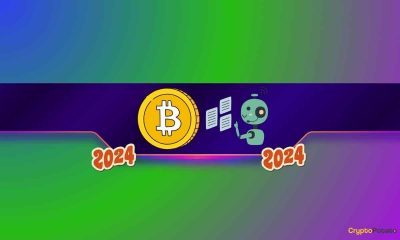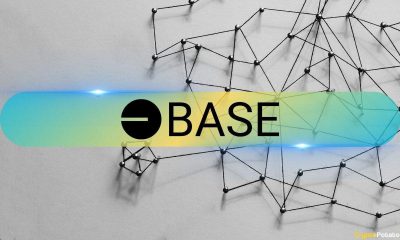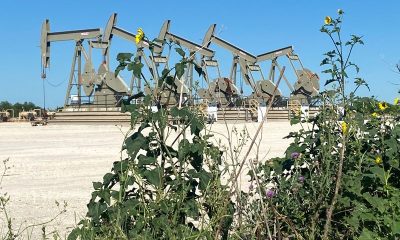Economy
Fed’s Powell: Strong economy may still require rate increases
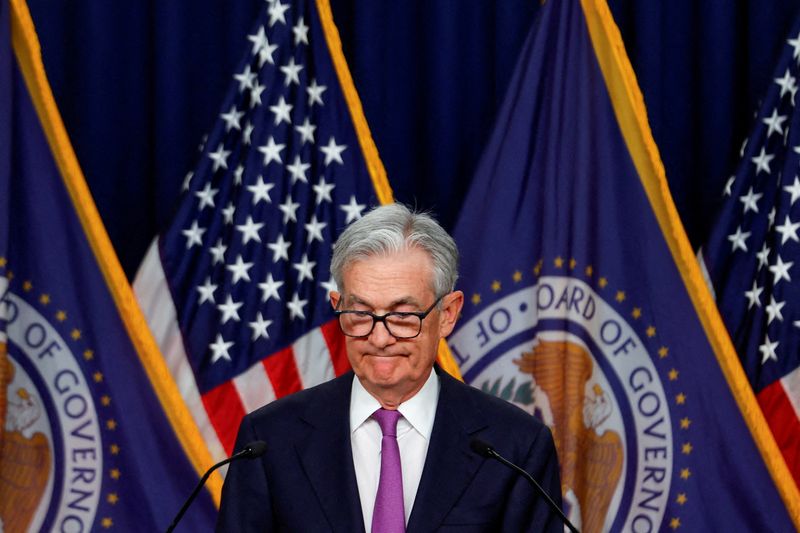

© Reuters. FILE PHOTO: U.S. Federal Reserve Chairman Jerome Powell holds a press conference after the release of the Fed policy decision to leave interest rates unchanged, at the Federal Reserve in Washington, U.S, September 20, 2023. REUTERS/Evelyn Hockstein/File P
By Howard Schneider
(Reuters) – The U.S. economy’s strength and continued tight labor markets could warrant further Federal Reserve interest rate increases, Fed Chair Jerome Powell said on Thursday in remarks that appeared to push back against market expectations that the U.S. central bank’s rate hikes had reached an end.
“We are attentive to recent data showing the resilience of economic growth and demand for labor. Additional evidence of persistently above-trend growth, or that tightness in the labor market is no longer easing, could put further progress on inflation at risk and could warrant further tightening of monetary policy,” Powell said in remarks to the Economic Club of New York.
For inflation to durably return to the Fed’s 2% target, it “is likely to require a period of below-trend growth and some further softening in labor market conditions,” Powell said.
Since the Fed began raising interest rates in March of 2022 the unemployment rate has varied little from the current 3.8%, below the level most Fed officials feel is noninflationary, and overall economic growth has generally remained above the 1.8% annual growth rate Fed officials see as the economy’s underlying potential.
The Fed is “proceeding carefully” in evaluating the need for any further rate increases, Powell said, likely leaving intact current expectations that the Fed will leave its benchmark policy rate steady at the current 5.25% to 5.5% range at the upcoming Oct. 31-Nov. 1 meeting.
There is evidence the labor market is cooling, Powell said, with some important measures approaching levels seen even before the pandemic.
Powell also noted a number of fresh “uncertainties and risks” that need to be accounted for as the Fed tries to balance the threat of allowing inflation to rekindle against the threat of leaning on the economy more than is necessary.
Those include new geopolitical risks to the economy from the “horrifying” attack on Israel by the Palestinian militant Hamas group, Powell said.
“Our institutional role at the Federal Reserve is to monitor these developments for their economic implications, which remain highly uncertain,” Powell said. “Speaking for myself, I found the attack on Israel horrifying, as is the prospect for more loss of innocent lives.”
He also noted recent market-driven increases in bond yields that have helped to “significantly” tighten overall financial conditions.
“Persistent changes in financial conditions can have implications for the path of monetary policy,” Powell said, with higher market-based interest rates, if sustained, doing the same job as Fed rate increases.
But the Fed chair also voiced what has become a lingering theme at the U.S. central bank: That despite steady progress on lowering inflation, the battle isn’t over, with further rate increases still a possibility and the duration of tight monetary conditions still to be determined.
“Inflation is still too high, and a few months of good data are only the beginning of what it will take to build confidence that inflation is moving down sustainably toward our goal,” Powell said, citing the progress made since inflation peaked last year but also noting that one of the Fed’s main measures of inflation remained at 3.7% through September, nearly twice the central bank’s target.
“We cannot yet know how long these lower readings will persist, or where inflation will settle over coming quarters,” Powell said. “The path is likely to be bumpy and take some time…My colleagues and I are united in our commitment to bringing inflation down sustainably to 2%.”
The weeks since the Fed’s September meeting have been unusually turbulent, with worries about regional war in the Middle East rising and bond markets driving market interest rates higher, tightening the financial conditions faced by businesses and households somewhat independent of the Fed.
Data since the Fed’s last meeting also has shown U.S. job growth reaccelerating unexpectedly, retail sales defying predictions of a slowdown and varying measures of prices offering inconsistent signals about whether inflation is on track to return to the Fed’s 2% target in a timely manner.
Powell’s appearance comes less than 48 hours before the beginning of the traditional quiet period ahead of the rate-setting Federal Open Market Committee’s meeting on Oct. 31-Nov. 1. While a handful of other Fed officials have appearances later on Thursday and Friday before blackout begins on Saturday, it is Powell’s remarks that will set the tone for policy expectations heading into that meeting.
Should they leave rates unchanged in two weeks as is now widely expected, it would mark the first back-to-back meetings with no rate increase since the Fed kicked off its hiking campaign in March 2022.
A Reuters poll of more than 100 economists published on Wednesday showed more than 80% expect no rate hike at the next meeting, and most also believe the Fed is done with rate hikes even though a majority of policymakers at their September meeting projected one more quarter-point increase was likely to be needed by year end.
Many in the poll offered the caveat that if progress on inflation stalls out or reverses, the Fed would not hesitate to resume raising rates.
Economy
Russian central bank says it needs months to make sure CPI falling before rate cuts -RBC


© Reuters. Russian Central Bank Governor Elvira Nabiullina attends a news conference in Moscow, Russia June 14, 2019. REUTERS/Shamil Zhumatov/File Photo
MOSCOW (Reuters) – Russia’s central bank will need two to three months to make sure that inflation is steadily declining before taking any decision on interest rate cuts, the bank’s governor Elvira Nabiullina told RBC media on Sunday.
The central bank raised its key interest rate by 100 basis points to 16% earlier in December, hiking for the fifth consecutive meeting in response to stubborn inflation, and suggested that its tightening cycle was nearly over.
Nabiullina said it was not yet clear when exactly the regulator would start cutting rates, however.
“We really need to make sure that inflation is steadily decreasing, that these are not one-off factors that can affect the rate of price growth in a particular month,” she said.
Nabiullina said the bank was taking into account a wide range of indicators but primarily those that “characterize the stability of inflation”.
“This will take two or three months or more – it depends on how much the wide range of indicators that characterize sustainable inflation declines,” she said.
The bank will next convene to set its benchmark rate on Feb. 16.
The governor also said the bank should have started monetary policy tightening earlier than in July, when it embarked on the rate-hiking cycle.
Economy
China identifies second set of projects in $140 billion spending plan


© Reuters. FILE PHOTO: Workers walk past an under-construction area with completed office towers in the background, in Shenzhen’s Qianhai new district, Guangdong province, China August 25, 2023. REUTERS/David Kirton/File Photo
SHANGHAI (Reuters) – China’s top planning body said on Saturday it had identified a second batch of public investment projects, including flood control and disaster relief programmes, under a bond issuance and investment plan announced in October to boost the economy.
With the latest tranche, China has now earmarked more than 800 billion yuan of its 1 trillion yuan ($140 billion) in additional government bond issuance in the fourth quarter, as it focuses on fiscal steps to shore up the flagging economy.
The National Development and Reform Commission (NDRC) said in a statement on Saturday it had identified 9,600 projects with planned investment of more than 560 billion yuan.
China’s economy, the world’s second largest, is struggling to regain its footing post-COVID-19 as policymakers grapple with tepid consumer demand, weak exports, falling foreign investment and a deepening real estate crisis.
The 1 trillion yuan in additional bond issuance will widen China’s 2023 budget deficit ratio to around 3.8 percent from 3 percent, the state-run Xinhua news agency has said.
“Construction of the projects will improve China’s flood control system, emergency response mechanism and disaster relief capabilities, and better protect people’s lives and property, so it is very significant,” the NDRC said.
The agency said it will coordinate with other government bodies to make sure that funds are allocated speedily for investment and that high standards of quality are maintained in project construction.
($1 = 7.1315 renminbi)
Economy
Russian central bank says it needs months to make sure CPI falling before rate cuts -RBC


© Reuters. Russian Central Bank Governor Elvira Nabiullina attends a news conference in Moscow, Russia June 14, 2019. REUTERS/Shamil Zhumatov/File Photo
MOSCOW (Reuters) – Russia’s central bank will need two to three months to make sure that inflation is steadily declining before taking any decision on interest rate cuts, the bank’s governor Elvira Nabiullina told RBC media on Sunday.
The central bank raised its key interest rate by 100 basis points to 16% earlier in December, hiking for the fifth consecutive meeting in response to stubborn inflation, and suggested that its tightening cycle was nearly over.
Nabiullina said it was not yet clear when exactly the regulator would start cutting rates, however.
“We really need to make sure that inflation is steadily decreasing, that these are not one-off factors that can affect the rate of price growth in a particular month,” she said.
Nabiullina said the bank was taking into account a wide range of indicators but primarily those that “characterize the stability of inflation”.
“This will take two or three months or more – it depends on how much the wide range of indicators that characterize sustainable inflation declines,” she said.
The bank will next convene to set its benchmark rate on Feb. 16.
The governor also said the bank should have started monetary policy tightening earlier than in July, when it embarked on the rate-hiking cycle.

 Forex2 years ago
Forex2 years agoForex Today: the dollar is gaining strength amid gloomy sentiment at the start of the Fed’s week

 Forex2 years ago
Forex2 years agoHow is the Australian dollar doing today?

 Forex1 year ago
Forex1 year agoUnbiased review of Pocket Option broker

 Forex2 years ago
Forex2 years agoDollar to pound sterling exchange rate today: Pound plummeted to its lowest since 1985

 Cryptocurrency2 years ago
Cryptocurrency2 years agoWhat happened in the crypto market – current events today

 World2 years ago
World2 years agoWhy are modern video games an art form?

 Stock Markets2 years ago
Stock Markets2 years agoMorgan Stanley: bear market rally to continue

 Economy2 years ago
Economy2 years agoCrude oil tankers double in price due to EU anti-Russian sanctions



